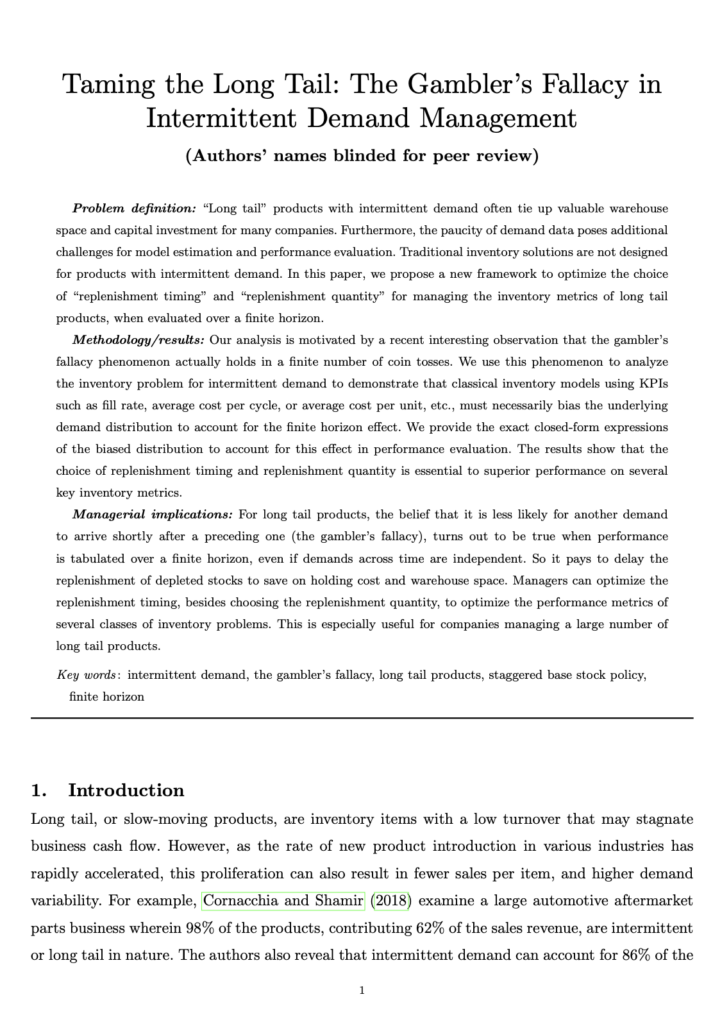Problem definition: “Long tail” products with intermittent demand often tie up valuable warehouse space and capital investment for many companies. Furthermore, the paucity of demand data poses additional challenges for model estimation and performance evaluation. Traditional inventory solutions are not designed for products with intermittent demand. In this paper, we propose a new framework to optimize the choice of “replenishment timing” and “replenishment quantity” for managing the inventory metrics of long tail products, when evaluated over a finite horizon.
Methodology/results: Our analysis is motivated by a recent interesting observation that the gambler’s fallacy phenomenon actually holds in a finite number of coin tosses. We use this phenomenon to analyze the inventory problem for intermittent demand to demonstrate that classical inventory models using KPIs such as fill rate, average cost per cycle, or average cost per unit, etc., must necessarily bias the underlying demand distribution to account for the finite horizon effect. We provide the exact closed-form expressions of the biased distribution to account for this effect in performance evaluation. The results show that the choice of replenishment timing and replenishment quantity is essential to superior performance on several key inventory metrics.
Managerial implications: For long tail products, the belief that it is less likely for another demand to arrive shortly after a preceding one (the gambler’s fallacy), turns out to be true when performance is tabulated over a finite horizon, even if demands across time are independent. So it pays to delay the replenishment of depleted stocks to save on holding cost and warehouse space. Managers can optimize the replenishment timing, besides choosing the replenishment quantity, to optimize the performance metrics of several classes of inventory problems. This is especially useful for companies managing a large number of long tail products.

